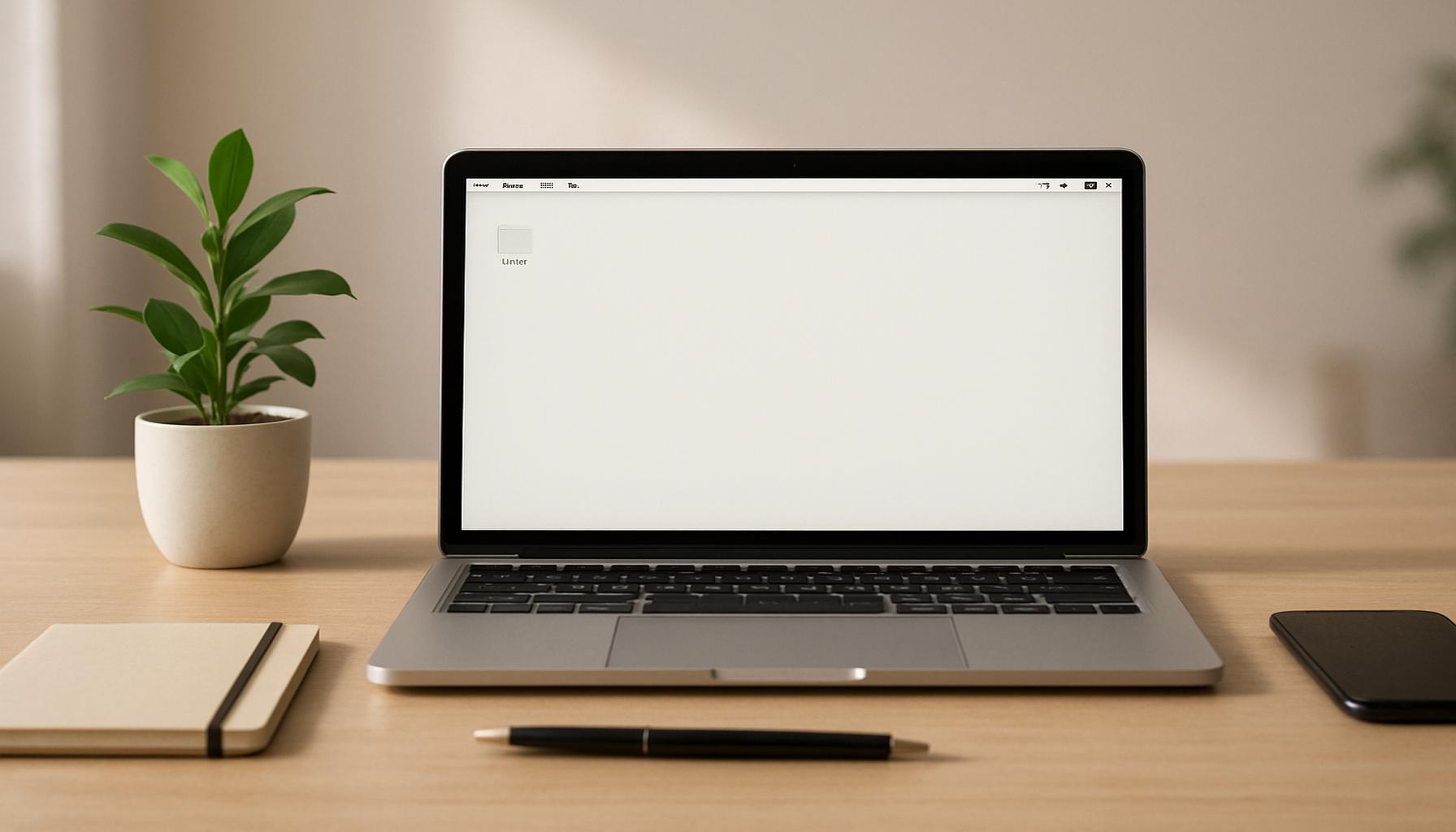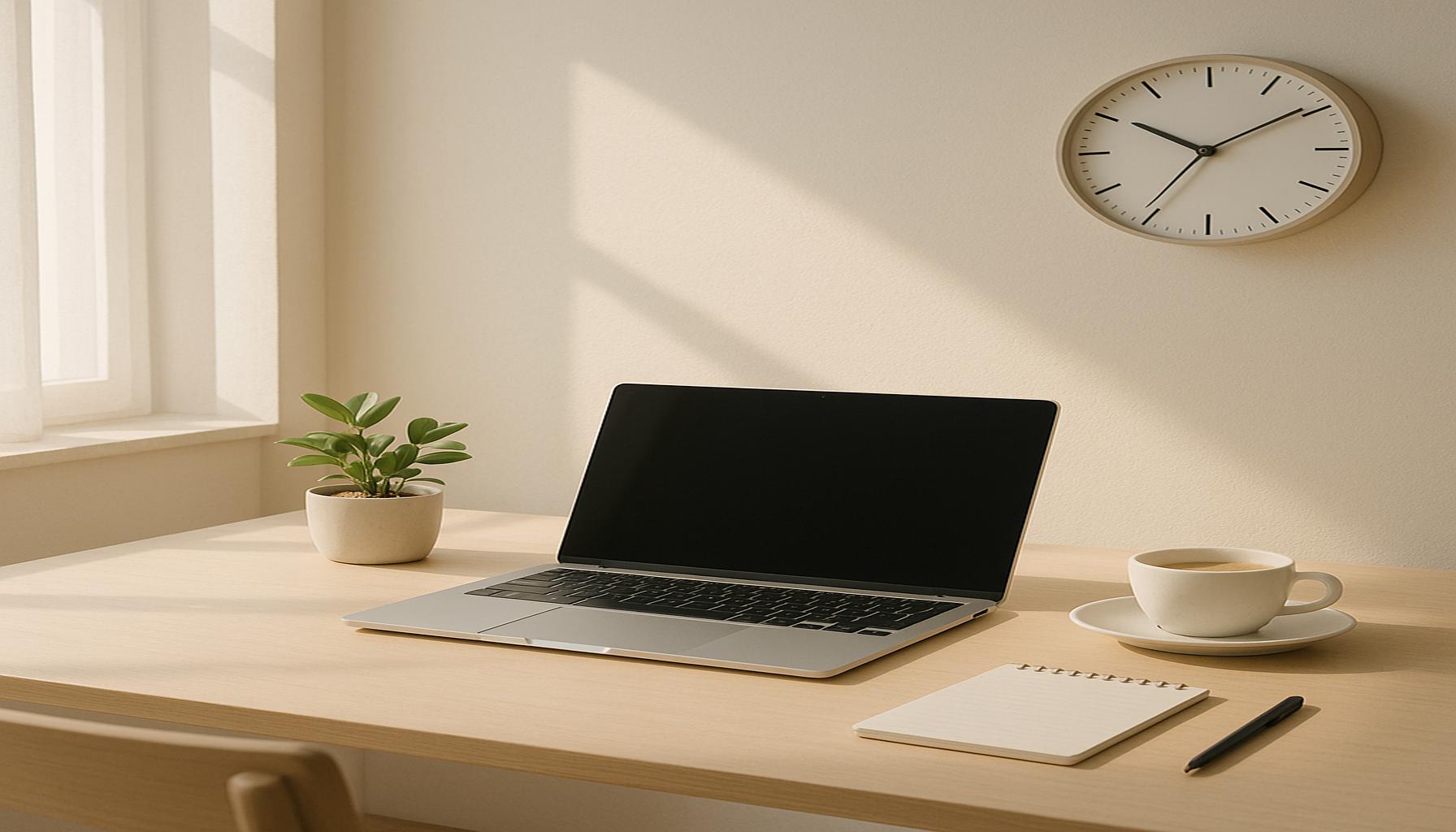How Minimalist Organization Can Improve Your Productivity at Work

The Power of Minimalist Organization
In today’s fast-paced work environment, minimalist organization has emerged as a powerful strategy to enhance productivity and streamline workflows. Many professionals grapple with the overwhelming clutter of physical and digital distractions, which can dilute focus and hinder performance. This predicament can lead to a chaotic atmosphere that stifles both efficiency and creativity.
Adopting a minimalist approach is all about simplifying your workspace and focusing on what truly matters. It requires identifying essential tasks and decluttering both your physical environment and mental space. To understand why minimalist organization is beneficial, let’s explore some of its key advantages:
- Clarity of Focus: A decluttered workspace fosters better concentration. For example, a study by Princeton University found that physical clutter in one’s surroundings competes for attention, making it difficult to focus on important tasks. By minimizing distractions, individuals can hone in on their work with laser-like precision.
- Reduced Stress: An organized space minimizes anxiety associated with chaos. Numerous psychological studies show that clutter can heighten feelings of stress and overwhelm. When your workspace is tidy, you are often left with a sense of control and readiness to tackle challenges.
- Enhanced Creativity: Less visual clutter can stimulate innovative thinking. Notably, some of the most successful companies, like Apple and Google, utilize open, minimalist office spaces that encourage brainstorming and collaboration, fostering a culture of creativity and innovation.
Research strongly supports the notion that a clean, orderly workspace significantly impacts overall efficiency. For instance, employees who embrace minimalist principles often report several profound benefits:
- Improved Time Management: Individuals spend less time searching for tools or documents, allowing for more efficient task completion. According to a study by the National Association of Professional Organizers, clutter can consume up to 55 minutes of work time each day, highlighting the financial cost of disorganization.
- Increased Job Satisfaction: A conducive atmosphere can lead to higher morale. Employees who work in organized environments often feel more empowered and engaged, which can translate into increased loyalty to their organization.
- Better Work-Life Balance: Streamlined tasks contribute to a more manageable workload, allowing employees to reserve time for personal pursuits and family. This balance is essential for maintaining mental health and overall well-being.
Exploring how minimalist organization translates into tangible productivity gains can reshape your work life. Various tools, from digital organization apps like Todoist and Trello to physical strategies like the KonMari Method for decluttering, can assist you on this transformative journey. Embracing minimalism in your workspace might just be the key to unlocking your full potential. It’s time to embark on this journey towards a more organized and efficient you, where clarity and focus pave the way for success.
DIVE DEEPER: Click here to uncover the significance of mental clarity in minimalism

Understanding Minimalist Organization
To fully appreciate how minimalist organization can boost productivity, it’s essential to grasp its core principles. Minimalism, in its truest form, advocates for the removal of excess and the prioritization of the vital. This concept applies not merely to physical items but also extends to tasks, digital spaces, and even mental clarity. By adopting a minimalist mindset, professionals can redefine their work environments and create systems that enhance focus and efficiency.
The foundation of minimalist organization lies in the simple yet profound practice of decluttering. This means evaluating what you truly need in your workspace—from the tools at your desk to the projects on your to-do list. By filtering out distractions and unnecessary items, you forge an environment that promotes clarity and purpose. Here are a few key areas where minimalist organization can manifest:
- Physical Workspace: Start with your desk. A clutter-free area allows your mind to breathe, paving the way for innovative ideas to flourish. Consider removing unnecessary papers, gadgets, and items that do not serve a specific function. A clean desk often reflects a clear mind, setting the stage for improved concentration.
- Digital Environment: Digital clutter can be just as detrimental as physical mess. Organize emails, documents, and files in a systematic manner. Utilize folders and labels to ensure that all vital information is easily accessible. Research shows that individuals spend an average of 30% of their workweek</strong searching for information. A streamlined digital space can significantly cut down on this lost time.
- Task Management: Minimalism encourages prioritization. Instead of overwhelming yourself with a long list of tasks, focus on the key objectives that need attention. Using techniques such as the 80/20 rule, which states that 80% of results come from 20% of efforts, can help you identify where to concentrate your energy.
Implementing minimalist organization strategies can yield remarkable results. Numerous studies highlight a direct link between a well-organized workspace and heightened productivity levels. A survey conducted by Gensler, a global design and architecture firm, found that employees who reported having a well-organized workspace are 20% more productive than those with cluttered environments. This statistic underscores the tangible benefits of minimalism in the workplace.
Moreover, as the concept gains traction, companies are beginning to embrace these principles to foster a culture of productivity. For example, organizations like Basecamp have integrated minimalist design elements into their offices, opting for open spaces that prompt collaboration without distractions. These companies recognize that a minimalist approach does not just enhance productivity but also nurtures creativity and innovation among employees.
As you consider how minimalist organization can transform your work experience, reflect on your environment and the organization of your tasks. By adopting minimalist strategies, you may find that productivity and inspiration flow more freely, leading to a brighter, more organized work life.
| Advantage | Description |
|---|---|
| Reduced Clutter | A minimalist workspace limits distractions, allowing employees to focus more effectively on tasks. |
| Improved Time Management | With a streamlined organization system, workers can allocate their time efficiently, resulting in higher productivity levels. |
The approach of minimalism fosters a clean and clutter-free environment where essential tools and information are easily accessible. This not only enhances mental clarity but also facilitates faster decision-making processes. When distractions are minimized, employees are more likely to engage deeply with their work. Additionally, embracing simplicity pushes individuals to prioritize tasks that truly matter, which is crucial for achieving workplace aspirations.Many studies have shown that organized spaces can lead to improved mood and increased motivation among workers, further validating the importance of minimalist organization. Companies looking to cultivate a productive work culture should take notice of these benefits and encourage their teams to adopt minimalist practices in their daily routines, leading to long-term gains in efficiency and effectiveness.
DISCOVER MORE: Click here to boost your productivity
The Psychological Benefits of Minimalist Organization
While the physical and digital aspects of minimalist organization are essential, the psychological benefits often prove to be equally transformative. Mental clarity is a crucial byproduct of a decluttered workspace. When your environment is organized, it allows your brain to function more efficiently, minimizing mental fatigue and confusion. In fact, studies suggest that a cluttered space can lead to increased cognitive overload, making it difficult to focus and diminishing overall productivity.
One powerful aspect of minimalist organization lies in its ability to enhance stress management. A survey published by the American Psychological Association revealed that 61% of Americans experience work-related stress. A simplified, organized work environment creates a sense of order and control, which can significantly reduce anxiety levels. When employees feel overwhelmed by their surroundings or recurring tasks, they may find it challenging to concentrate on their objectives. By eliminating chaos and distractions, minimalism fosters a calming atmosphere conducive to productivity.
Time Management Through Minimalism
Minimalist organization can also refine your time management skills. A central concept in minimalism is focusing on what truly matters. For instance, implementing tools like the Pomodoro Technique, which encourages short, focused work periods interspersed with breaks, can enhance your productivity. This approach naturally aligns with minimalist principles, as it encourages you to dedicate your energy to fewer tasks, resulting in a more concentrated effort.
Consider integrating task management apps that embrace minimalist design, such as Trello or Todoist. These platforms facilitate task prioritization and allow for a clear overview of your projects without overwhelming clutter. Statistics show that productivity software can boost efficiency by up to 25% in busy environments. By keeping things simple, these tools help users maintain focus and track progress effectively.
Creating a Culture of Minimalism
Beyond the individual level, organizations can benefit significantly by instilling a culture of minimalist organization. Companies that embrace this philosophy can cultivate an environment where employees are empowered to streamline their workflows. Google, for instance, encourages its employees to adopt a decluttering approach not only in their physical spaces but also in their emails and project management techniques. This culture has yielded a significant enhancement in team collaboration, with many employees reporting an increase in their ability to share ideas and innovate creatively.
Further emphasizing the potential of minimalist organization, a study conducted by the Cornell University found that employees who implemented minimalist practices reported a 45% reduction in time spent on administrative tasks. This significant reduction allows them to redirect their focus toward strategic initiatives and meaningful projects, ultimately fostering a workforce adept at meeting organizational goals.
As you delve into the realms of minimalist organization, it’s vital to recognize that the process is ongoing. Continual assessment of your environment, tools, and processes will help you maintain a streamlined approach that fosters productivity. By considering both the psychological and practical implications of minimalism, you can discover a renewed sense of purpose and effectiveness in your work life, unlocking the potential for greater achievements.
DIVE DEEPER: Click here to discover more about maximizing your time management
Embracing Minimalism for Enhanced Productivity
In conclusion, minimalist organization stands as a powerful catalyst for improving productivity in the workplace. By streamlining physical and digital spaces, employees can cultivate a sense of order that significantly enhances their mental clarity. It is clear that an organized environment not only reduces stress but also empowers individuals to focus on what truly matters in their work. By adopting techniques such as the Pomodoro Technique and utilizing minimalist task management apps like Trello or Todoist, workers can maximize their efficiency and concentrate their efforts, leading to a noticeable increase in output.
Furthermore, organizations that foster a culture of minimalism reap substantial benefits, creating a collaborative atmosphere where employees can freely share ideas and innovate. The substantial reductions in time spent on administrative tasks—as evidenced by the Cornell University study—demonstrate that a minimalist approach can refocus attention on strategic initiatives that drive success. As you consider the journey of implementing minimalist practices, remember that the process requires ongoing evaluation and adaptation.
By embracing minimalist organization, you not only facilitate a more productive work environment but also unlock a renewed sense of purpose. The potential for greater achievements awaits those willing to simplify and declutter, revealing the true essence of their professional capacities. Ultimately, the question remains: Are you ready to explore the transformative benefits of minimalism in your workspace and elevate your productivity to new heights?


